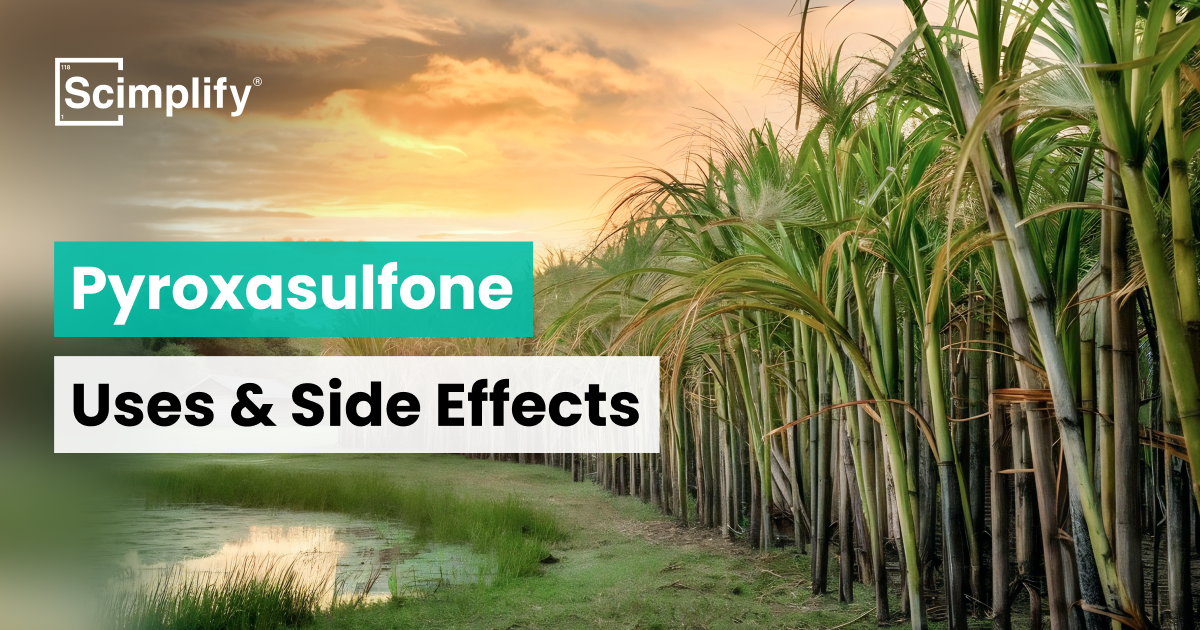What are the uses and side effects of Pyroxasulfone?
Pyroxasulfone is a selective pre-emergent herbicide known for long-lasting control of grasses and broadleaf weeds in crops like corn, soy, and wheat. Effective against resistant weeds, it requires careful use to avoid crop injury, resistance, and environmental risks.

Pyroxasulfone is recognized as a selective herbicide that effectively controls various types of annual grasses and broadleaf weeds. Farmers often choose it for its long-lasting effect in the soil and its ability to manage weeds that resist other herbicides. It has an impact on plants by stopping them from making very long-chain fatty acids (VLCFAs). These acids play a crucial role in plant cell growth, which makes pyroxasulfone strong when weeds start to sprout.
Uses of Pyroxasulfone
Maize (Corn) Farming:
Pyroxasulfone has a significant impact on controlling grasses such as foxtail and barnyardgrass, which compete with corn in ,fields.
Soybean Cultivation:
It offers long-lasting pre-emergence weed control, effectively controlling tough weeds like ryegrass, wild oats, and brome species, which can reduce.
Wheat Production
Farmers use it extensively to control tough weeds like ryegrass, wild oats, and brome species, which can reduce effectively controlling crop yield.
Cotton Fields:
Pyroxasulfone helps to manage hard-to-control resistant broadleaf weeds such as Palmer amaranth and pigweed, which make it challenging for farmers to deal with older chemistries.
Sunflower Cultivation:
It provides early weed control in sunflowers, facilitating better establishment and competitive growth.
Sugarcane Farms:
It is used in pre-emergent applications to provide control of grassy weeds, allowing plants to be as healthy as possible during the early growing period.
Peanut Farming:
It is recommended for sandy soils typical of peanut growing regions, where weed competition could limit pod development.
Pulses and Legume Crops:
When applied carefully in crops like lentils, chickpeas, and beans, it can be effective at controlling early-season weed pressure.
Vegetable Farms (specific crops):
While it is not presently registered for most vegetables, it can be used under certain guidelines for crops like onions and tomatoes.
No-Till and Conservation Agriculture:
Its residual control makes it a great product in conservation tillage systems and helps to reduce the need for mechanical weeding.
Industries That Use Pyroxasulfone
Agrochemical and Crop Protection Industry
Commercial Farming and Agribusiness
Seed Companies and Distributors
Pesticide R&D and Field Trial Companies
IPM (Integrated Pest Management) Providers
Public Sector and Government Agricultural Agencies
Side Effects and Risks of Pyroxasulfone
In spite of its agricultural advantages, Pyroxasulfone presents several environmental and agronomic risks that users should recognize:
- Crop Injury:
If misapplied (or applied to non-labeled crops), it can lead to growers experiencing signs of yellowing (chlorosis), root growth, or germination.
- Aquatic Toxicity:
Although it is not a highly water-soluble product, pyro can runoff into adjacent water bodies, harming marine organisms. Buffer zones should be established and maintained to avoid this risk while spraying.
- Resistance pressure:
Repeatedly using it without rotating modes of action may affect the product's effectiveness. Overuse of the same fields year after year may harm soil microflora and biodiversity in the long term.
- Drift and non-target injury
Depending on wind/wet conditions, spray drift may result in off-target effects to adjacent fields or wild plants.
- Environmental build-up:
Overuse to the same fields year-after-year may have an adverse impact on soil microflora and biodiversity.
- Limited crop spectrum:
Not all crops are tolerant to Pyroxasulfone, or if misapplied, it could cause injury to vegetable crops or pulses.
Final Thoughts
Pyroxasulfone offers farmers and agribusinesses a modern and reliable solution for pre-emergent weed control, particularly in crops such as corn, soybeans, and wheat. However, like any chemical input, it must be used judiciously, with attention to application guidelines, rotation strategies, and environmental safety to ensure both agronomic success and ecological responsibility.
Explore more about Pyroxasulfone and its supplier.


